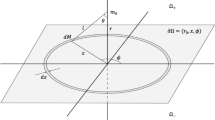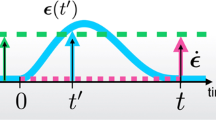Abstract
G. L. LE SAGE, of Geneva, devoted the best part of his life to a theory of the mechanism of gravity. It appeared in the Transactions of the Berlin Academy in 1782. The fullest account of his theory was published by Pierre Prevost, as editor, in 1818 (“Deux traités de physique méchanique”). The general idea of the theory is that ultramundane corpuscles are flying through space in all directions with great velocity; that they collide with the atoms of mundane matter; and that in consequence they issue from the sun or a planet with less velocity than that with which they entered it. Thus the atoms of the moon are bombarded by corpuscles from all directions equally, except that those coming from the earth have a smaller velocity and, in consequence, the moon is driven towards the earth by the force called gravitation.
This is a preview of subscription content, access via your institution
Access options
Subscribe to this journal
Receive 51 print issues and online access
$199.00 per year
only $3.90 per issue
Buy this article
- Purchase on Springer Link
- Instant access to full article PDF
Prices may be subject to local taxes which are calculated during checkout
Similar content being viewed by others
Author information
Authors and Affiliations
Rights and permissions
About this article
Cite this article
FORBES, G. Corpuscular Theory. Nature 122, 345–346 (1928). https://doi.org/10.1038/122345b0
Issue Date:
DOI: https://doi.org/10.1038/122345b0
Comments
By submitting a comment you agree to abide by our Terms and Community Guidelines. If you find something abusive or that does not comply with our terms or guidelines please flag it as inappropriate.



